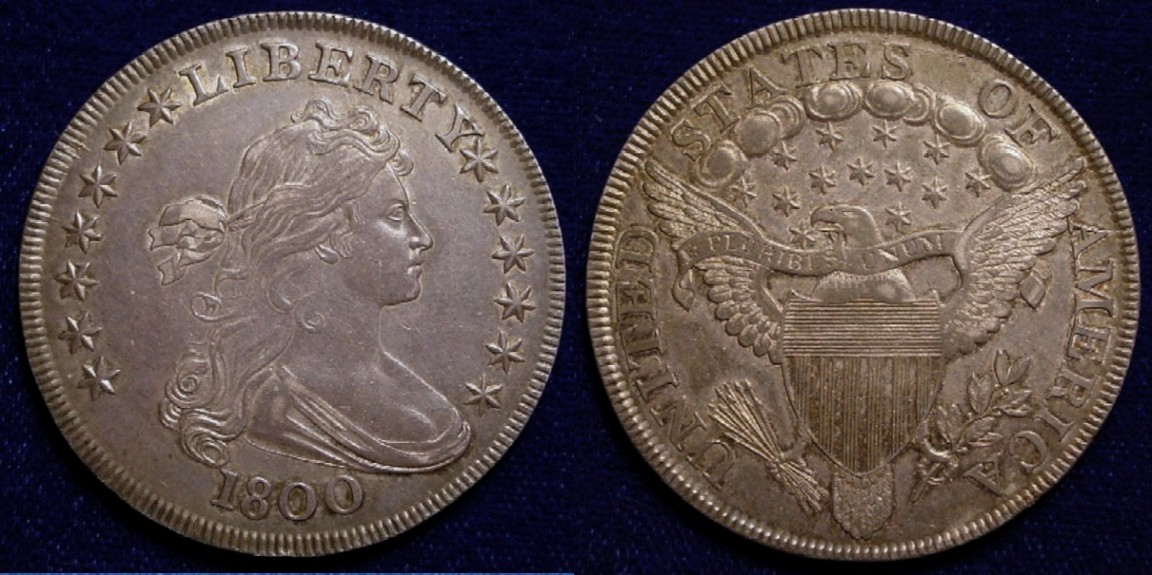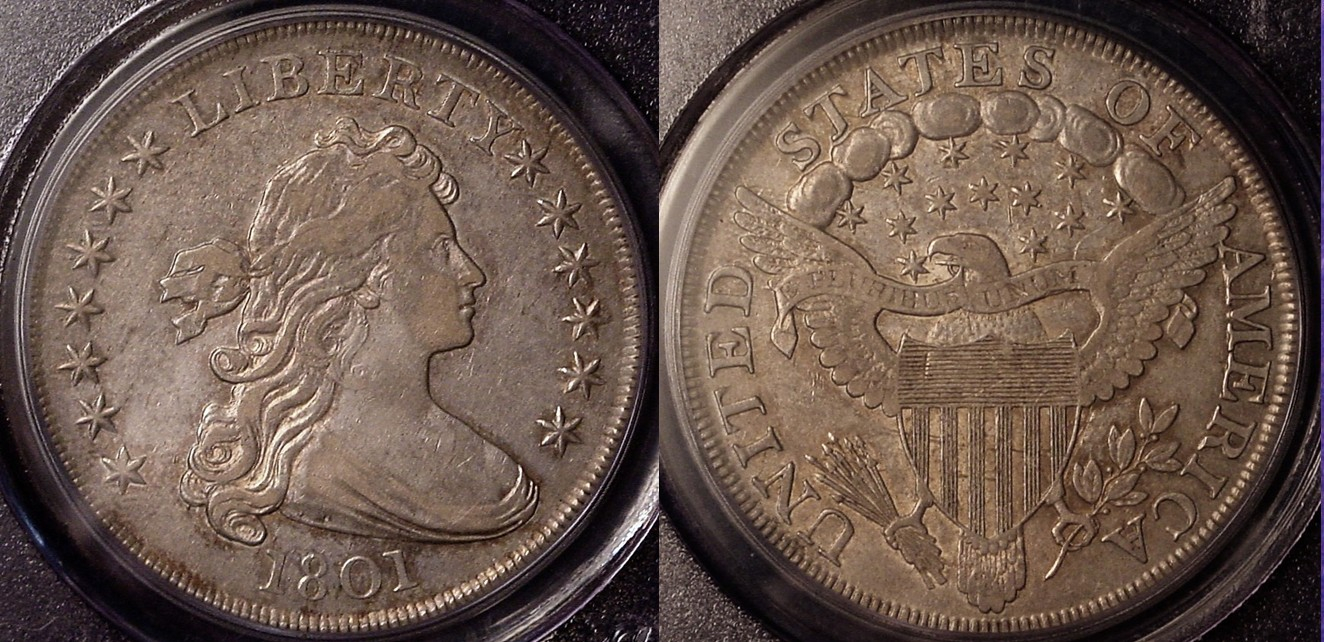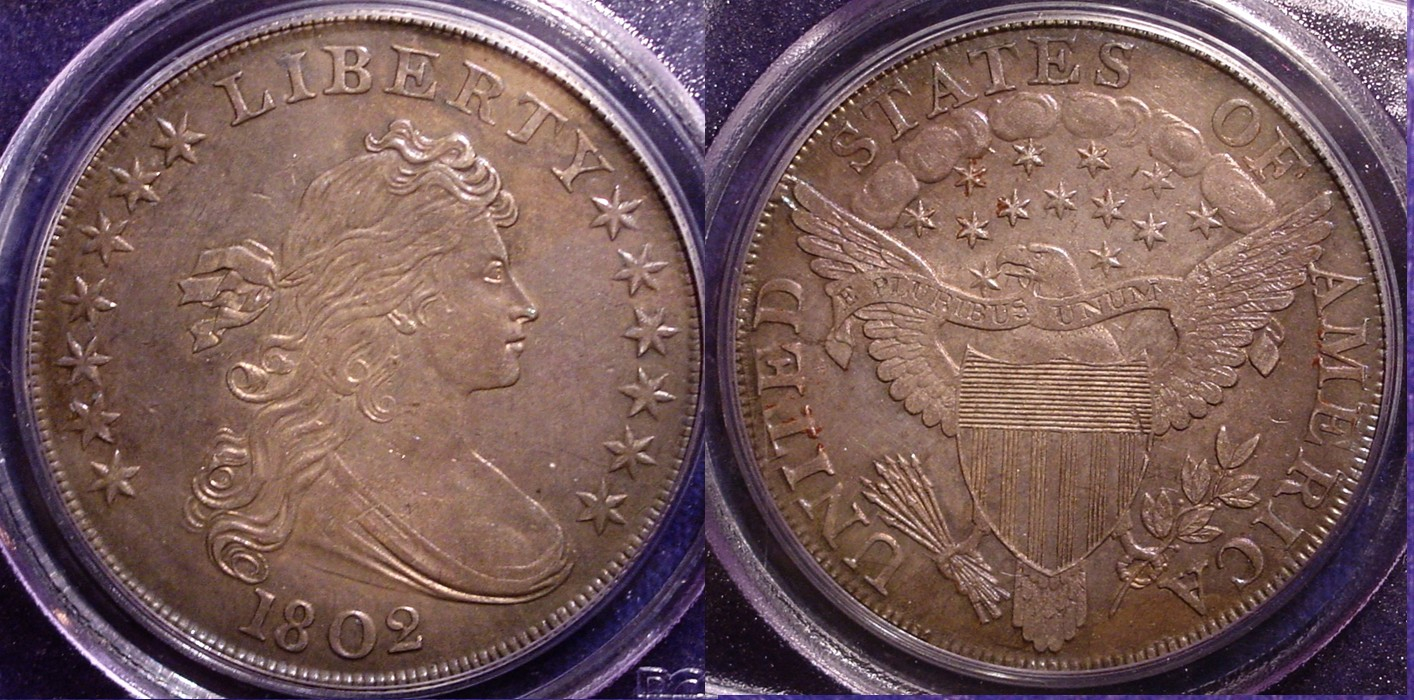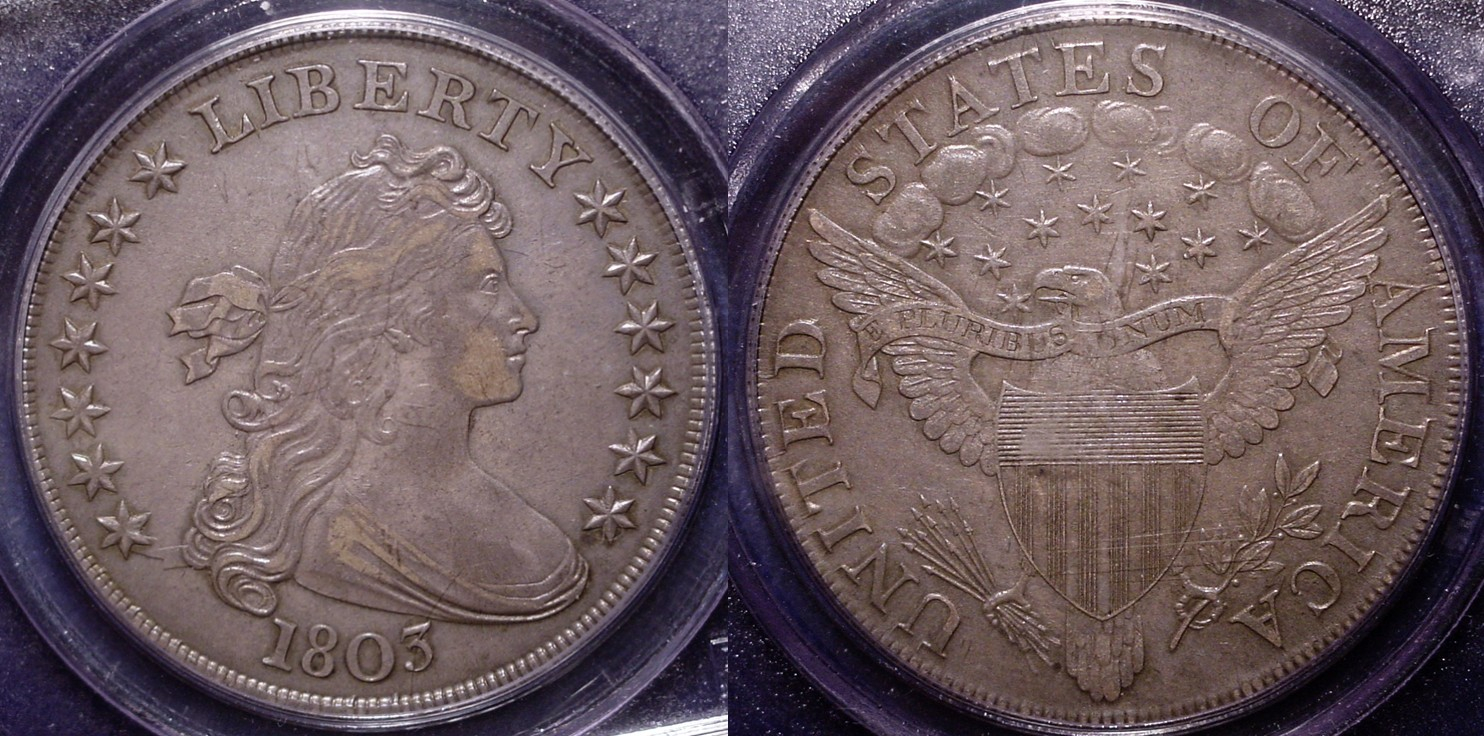Howdy, Stranger!
It looks like you're new here. If you want to get involved, click one of these buttons!
Quick Links
A Guide to Collecting the Early U.S. Silver Dollars by Date and Major Design Type, Part 4

1800 Dollars
The 1800 Dollar mintage marked the last time that the early dollar mintage reached 100,000. By this time the melt value of the silver was beginning exceed the face value of the coin, and the incentives for depositing silver at the mint was going away. Although the 1800 dollars are scarcer than the 1798 and 1799 pieces, they sell for roughly the same price. The official 1800 mintage is 220,920, but David Bowers has pared that back to 100,00 coins that have the 1800 date on them.
In the early 1800s, a trade was developing between the Caribbean islands and The United States. Traders took American silver dollars to the islands and exchanged them for Spanish milled dollars. Back in the United States, the traders deposited the Spanish dollars at the mint and converted them into U.S. dollars. Since the Spanish dollars contained more silver than the U.S. coins, they got back more coins in return thereby turning a profit. They then took the U.S. dollars back to the islands to repeat the process.

1801 Dollars
The 1801 Bust Dollar might be considered to be a key date in the series, with a “Bowers mintage” of 35,000 and an estimated survival of 2,000 pieces. Since much of the demand for Bust Dollars comes from type collectors, the price premiums, if any, are modest. That is not say that won’t take you longer to find “the right piece” for you date collection. The official mintage for the 1801 dollar was 54,454.

1802 Dollars
Although the official mintage for the 1802 Bust Dollar is 41,650, Dave Bowers has increased that to 80,000. Part of high estimate is fueled by the die variety he lists as BB-241. According to Bowers it is the most common die variety among all of the Draped Bust, Heraldic Eagle dollars minted from 1798 to 1803 with an estimated population of from 1,500 to 2,750 pieces. There is an overdate variety, an 1802 over 1, which was minted from four different obverse dies. Given the prolific nature of the 1802, BB-241 variety, the 1802 Bust Dollar is fairly easy to find.

1803 Dollars
The official mintage for the 1803 Bust Dollars is 85,634, which includes the 19,570 dollars that were delivered in 1804. This delivery was cited as part of the “mystery” surrounding the famous 1804 dollars. Was virtually the entire mintage lost when a mysterious ship that sank? Where are all of those coins? The answer, of course, is that all of those dollars were dated 1803. The dollars dated 1804 were first made in 1834 for two or more Proof sets that were prepared for diplomatic purposes. The mint struck additional 1804 over the next two plus decades to satisfy collector demand.
There are two “Red Book” varieties of 1803 Bust Dollars, small 3 and large 3. According to “Coin Facts,” there an estimated 1,800 Small 3 and 1,200 Large 3 surviving examples. The 1803 dollar is the second scarcest date among the Heraldic Eagle Bust Dollars. It offers only a moderate challenge for the date collector.
Conclusions
Given their popularity, forming the date and major type set that I have covered here is a significant financial undertaking for many collectors. As late as the early 1990s, common date Bust dollars (e.g. a common variety 1799 dollar) in prime collector grades such as VF and EF were selling for $750 and $1,300 respectively. Prices began to move for the early dollars in 2000s. Today the Coindealer Newsletter (“Greysheet”) prices have escalated to $2,300 and $4,000 in the same grades. Although the coin market has become “soft” in recent years, the declines in value for these coins have not been large.
These coins might seem to be pricey on the surface, but there is another way to look at the market for early dollars. Many dates in a Bust dollar collection are scarcer or almost equally as scarce as many of the key date coins that collectors regard as “rare.” Here are some examples taken from “Coin Facts:”
|
Date, Mint Mark and Denomination |
Estimated Number of Survivors |
|
|
|
|
1877 Indian Cent |
5,750 |
|
1909-S-VDB Lincoln Cent |
61,000 |
|
1916-D Mercury Dime |
10,000 |
|
1901-S Barber Quarter |
2,000 |
|
1916 Standing Liberty Quarter |
10,000 |
|
1893-S Morgan Dollar |
9,951 |
|
1895-P Proof Morgan Dollar |
400 |
|
Rarest Early Dollar – 1794 |
150 |
|
Most common early dollar – 1795 Flowing Hair |
10,250 |
|
Least common Bust Dollar – 1798 Small Eagle |
1,350 |
|
Most common Bust Dollar – 1799 |
10,060 |
|
Least common post 1800 Bust Dollar – 1801 |
2,000 |
In this context, one could say that the early dollars are not really over-priced, but one must remember than many collectors give scant consideration to forming date or variety sets of these coins. There is far more interest in more modern series like the Lincoln Cents, Mercury Dimes and Morgan Dollars.


Comments